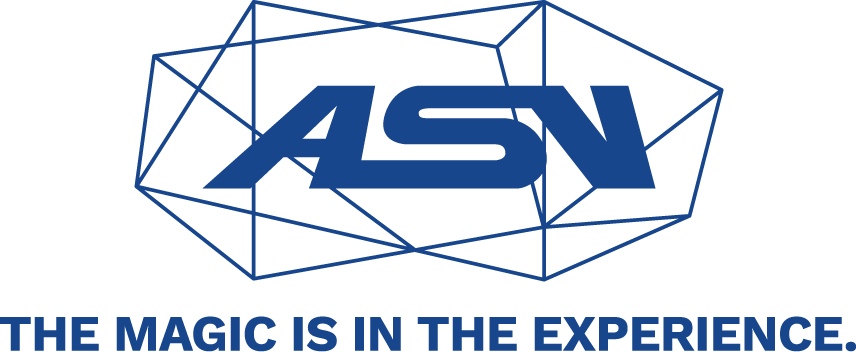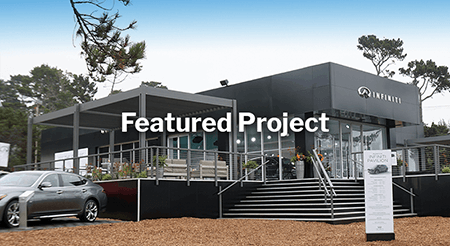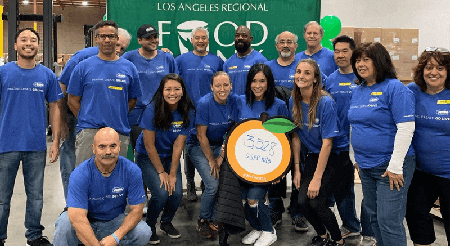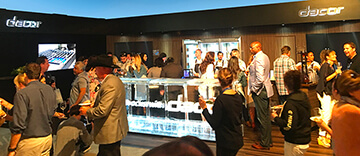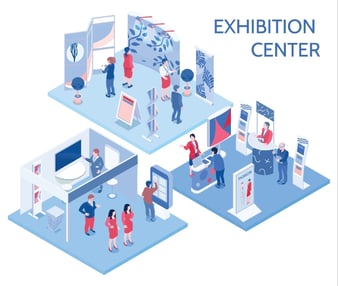 With trade shows, brands are able to pound the pavement (or the convention center floor, to be more precise). According to a recent study, the number of virtual events decreased by 15% from 2021 to 2022, indicating that consumers are tired of online “experiences” and ready to cultivate deeper connections in person. For companies, it’s a chance to get from behind their screens and in front of a crowd. More specifically, brands get a chance to come face-to-face with three distinct audiences: 1) Existing customers who are looking to re-engage; 2) Newly converted customers from the two-year hibernation; and 3) Potential opportunities for those who don’t know your brand.
With trade shows, brands are able to pound the pavement (or the convention center floor, to be more precise). According to a recent study, the number of virtual events decreased by 15% from 2021 to 2022, indicating that consumers are tired of online “experiences” and ready to cultivate deeper connections in person. For companies, it’s a chance to get from behind their screens and in front of a crowd. More specifically, brands get a chance to come face-to-face with three distinct audiences: 1) Existing customers who are looking to re-engage; 2) Newly converted customers from the two-year hibernation; and 3) Potential opportunities for those who don’t know your brand.
No matter which of these customers you encounter, engaging them with an eye-catching and representative illustration of your brand story, products, and services is crucial. Think of it as a strategic marketing move that will facilitate authentic connections for a lifetime. After all, trust is a growing consumer value, and a compelling trade show booth can leave people feeling confident and interested in your brand.
Creating an eye-catching, authentic trade show display can sometimes feel impossible due to budget constraints. According to a study from Display Wizard, 53% of people said cost was one of the most important factors when choosing to exhibit at a trade show. This is a fair concern considering that on average a 20x20 rental exhibit can cost upwards of $45,000 including space cost, labor, travel, literature, marketing, and shipping. But the reality is, that with the right knowledge of trade show expenses, you can create a stand that aligns with your business goals and budget. When figuring out how to develop a trade show budget that maintains allure, keep these tips in mind.
1. Do more with less. One way to keep your budget in check is by prioritizing each element of your display and asking these questions before purchasing:
-
What elements are essential to properly represent your brand, convey your story, and attract attendees? Examples include structure, signage, lighting, technology, flooring, furniture, engagement, and lead generation.
-
What value does each element add? This will help you prioritize so you know what to eliminate or reduce if you go over budget.
-
What could be replaced with something less costly or even removed altogether? If I removed these items, what effect would that have on my customers?
These are all great questions to consider. An assortment of branded structures, flooring, furniture pieces, and A/V solutions work off one another to bring a booth to life and connect with an eventgoer. Having a firm grasp on effectiveness, quantity, and value will help you make decisions that are not only cost-effective but purposeful.
What does this look like in practice? Once you’ve reserved a spot at an upcoming show, you’ll need to work with Show Services to install the booth and haul in the materials. Depending on where you are, these costs aren’t trivial. As an example, the onsite labor crew that you are required to use can charge $400-600 per hour to put up an LED screen. To mitigate these costs, you might consider a smaller and less complicated display — one with a less intensive construction process. Here’s where your prioritized list of display elements comes into play. Or maybe you get creative and think through other, less expensive ways to display your information. Are there other, effective avenues that could get your point across? Getting your team together to take a big-picture look at the critical elements needed to design your booth will always prove beneficial. Your experiential agency can help you determine all the associated costs and even take this off your plate to allow you to focus on more important things like connecting with attendees.
2. Remember that size matters. Some people think bigger is better and jump straight to outfitting their booths with heavier components such as wood, metal, or thick carpet. But what would it look like to consider “less-weighty” alternatives such as aluminum or plastic which are easier to handle and reduce the crew size you’ll need? Oftentimes, people look at the cost of heavier material at face value, forgetting to factor in the cost it takes to get those items from point A to point B. The type of material and number of items both impact weight. And the more weight you have, the more money you’ll spend on transportation and drayage.
3. Read up on regulations in advance. Trade show services aren't the same from one location to another. Whether you're presenting out of town or in your own backyard, you will need to have knowledge of the different costs associated with setting up and tearing down in different locations.
For example, a union town like New York City has more restrictions on trade show labor and services (e.g., overtime, holiday rates, electrical, internet, etc.). Look at these regulations in advance and figure out what effect they'll have on your budget and consider this when deciding where you want to be. Your bottom line will thank you later.
4. Rent instead of purchase. If you are just getting into the trade shows or will be participating infrequently, buying everything needed to bring an engaging display to reality isn’t necessary. When your budget is limited, think temporary rather than permanent. Your experiential agency can round up everything from modular, lightweight walls to flooring to A/V for your booth.
Renting instead of owning can slash your trade show budget in half by reducing costs of raw materials like wood and metal and fabrication labor. And it also eliminates storage costs. These savings can be put into custom graphics, technology, and engagement elements that help you make the biggest possible impression. And if done properly, attendees will never be able to tell that your booth is a rental.
Brainstorming about trade show booth design can lead to a plethora of excitement and team momentum, but don’t let the fear of cost put a damper on any big ideas you might have. Use these trade show budget tips to build a display that is not only fiscally responsible but remembered fondly. Fond memories and personal connections make a lasting impact on your consumers and can build trust for years to come.
